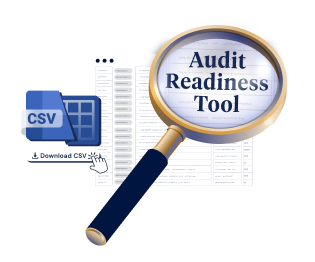Making Workforce Capability Tangible
Workforce capability is one of any healthcare organisation's most essential focus areas. Everyone is talking about it. We see it everywhere. But it can feel intangible. What is it? How do you build it? If an auditor showed up tomorrow, how would we show it?
In a recent webinar, we set out to make this concept more tangible. We looked at how you can build workforce capability – and demonstrate it during an audit. We explored how organisations can turn this essential concept into tangible, actionable outcomes by breaking it into clear evidence types and linking capability to everyday practice.
What Auditors Will Look For
Building workforce capability can feel like an abstract concept. Auditors are looking for both intent and impact—not just what you say you do but what actually happens on the floor.
They want to understand:
Is there evidence that the workforce has the knowledge, skills, attitudes, and competencies that enable staff to perform effectively?
Workforce capability needs to appear across multiple types of evidence. You’ll likely already have many of these pieces; these items are things you are already doing. The task now is to link them clearly and prepare your organisation to explain how they all fit together.
Importantly, auditors will triangulate evidence. They want to connect documents, feedback, and observations to ensure the story aligns at every level, from executives to frontline staff to individuals receiving care.
| Evidence Type | Examples |
|---|---|
| Documents and records |
|
| Governing Body Feedback |
|
| Management Feedback |
|
| Individual Feedback |
|
| Observations and Care Outcomes |
|
Watch the full webinar to hear how to prepare for your first audit under the new Standards and what evidence items relating to workforce capability may be requested.

Ensure your organisation is prepared for your first audit under the strengthened Standards.
Enabling Workforce Capability: Psychological Safety and Trauma-Informed Practice
Two key enablers in the new Standards are psychological safety and trauma-informed practice. These concepts are critical — they are the “glue” that supports capability by enabling people to:
- Feel safe - encouraging them to speak up, learn and grow.
- Take interpersonal risks - to contribute, give feedback, and drive improvement.
- Be accountable, practice safely, and communicate clearly.
Auditors will examine how these enablers are embedded in policies, processes, leadership behaviours, and day-to-day interactions.
Ready to make it real?
Watch the entire webinar to learn how to prepare evidence, connect your systems, and strengthen your workforce capability.
Explore more:
- Workforce Capability is Everyone's Business
- The Glue that Holds Workforce Capability Together
- Workforce Capability Starts in the Boardroom
- Provider Guide to Trauma-Informed Care
Author
Zoe Youl
Zoe Youl is a Critical Care Registered Nurse with over ten years of experience at Ausmed, currently as Head of Community. With expertise in critical care nursing, clinical governance, education and nursing professional development, she has built an in-depth understanding of the educational and regulatory needs of the Australian healthcare sector.
As the Accredited Provider Program Director (AP-PD) of the Ausmed Education Learning Centre, she maintains and applies accreditation frameworks in software and education. In 2024, Zoe led the Ausmed Education Learning Centre to achieve Accreditation with Distinction for the fourth consecutive cycle with the American Nurses Credentialing Center’s (ANCC) Commission on Accreditation. The AELC is the only Australian provider of nursing continuing professional development to receive this prestigious recognition.
Zoe holds a Master's in Nursing Management and Leadership, and her professional interests focus on evaluating the translation of continuing professional development into practice to improve learner and healthcare consumer outcomes. From 2019-2022, Zoe provided an international perspective to the workgroup established to publish the fourth edition of Nursing Professional Development Scope & Standards of Practice. Zoe was invited to be a peer reviewer for the 6th edition of the Core Curriculum for Nursing Professional Development.



